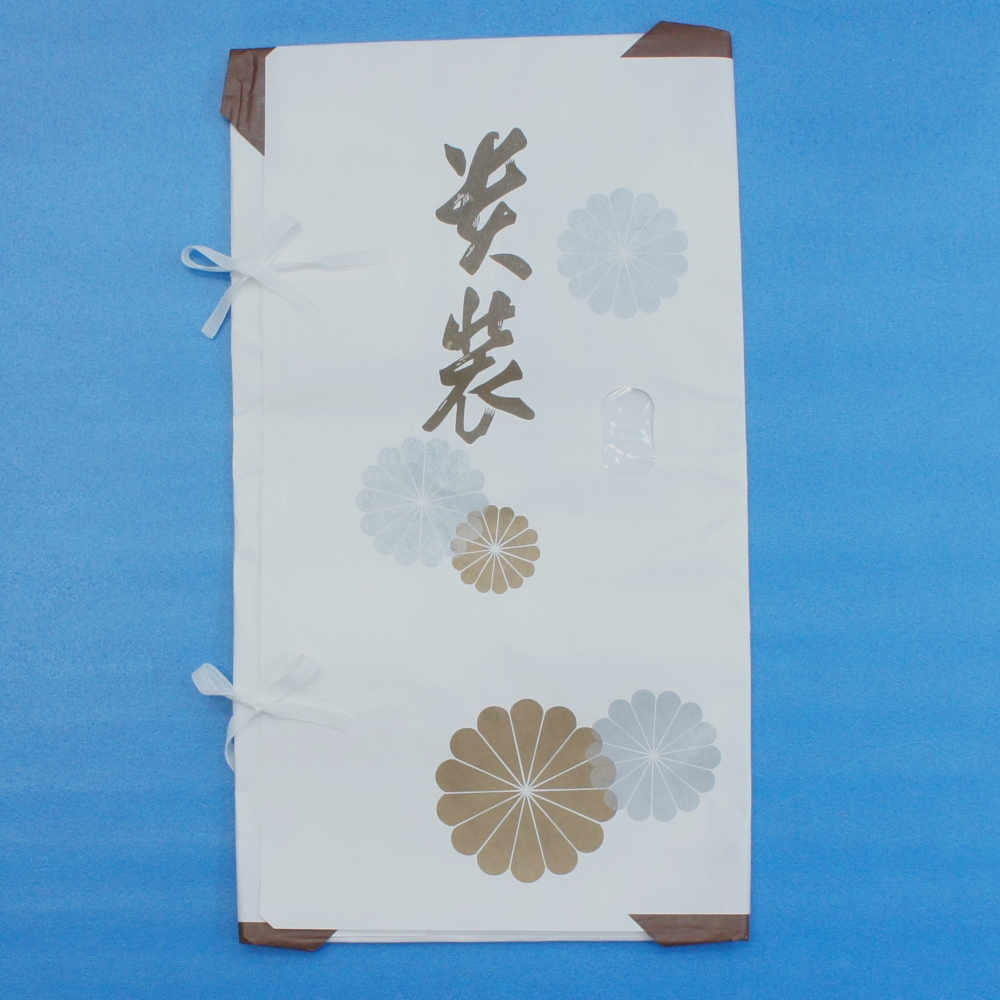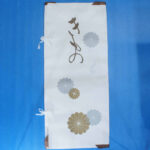Wrappingpaper
Wrapping-paper “tatoushi” is folding paper of kimono. It is made of thin and durable material”Washi”, capable of absorbing moisture effectively and protecting garments. Additionally, it provides protection against moisture and insects. Tatoushi(wrapping paper for kimonos) is also cherished as a traditional Japanese handicraft item.
1. Strength and durability:
– Tatoushi(wrapping paper for kimonos) Washi paper, despite its thinness, is incredibly strong and durable. Its dense fibers make it resistant to tearing and folding, especially high-quality washi paper can withstand long-term use.
2. Lightweight:
– Tatoushi(wrapping paper for kimonos) Washi paper is extremely lightweight. This characteristic is particularly important when it is used for art forms like painting or calligraphy. Its light weight also makes it suitable for packaging and folding.
3. Transparency and soft diffusion of light:
– Washi paper is breathable and diffuses light softly. This quality is useful for spreading soft light throughout a room with illumination, or when used as screens or shades.
4. Waterproofness:
– Washi paper possesses natural waterproofness, a result of the special treatment applied during its production process. As a result, it is generally resistant to water and less prone to deformation when exposed to moisture or water.
5. Ease of dyeing and processing:
– Tatoushi(wrapping paper for kimonos) Washi paper is soft and easy to dye and process. This characteristic is very convenient when using washi paper for art projects or crafts. Additionally, washi paper can receive various surface finishes, allowing for the creation of diverse beautiful designs.
6. Environmentally friendly:
– Tatoushi(wrapping paper for kimonos) Washi paper is made from natural materials and is a renewable resource, making it environmentally friendly. Moreover, the manufacturing process involves minimal chemical treatment, resulting in relatively low environmental impact.
Washi paper, valued for its unique characteristics and beauty, is highly esteemed not only in Japanese culture but also worldwide. Its diverse advantages make it an excellent material suitable for various applications.

